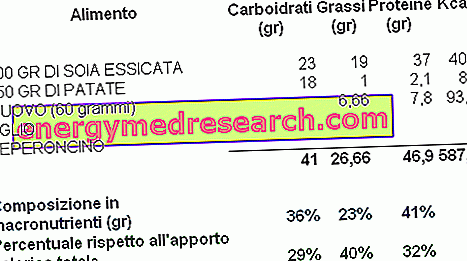Miconazole is an antifungal (or antifungal) drug of the azole type. It is mainly used in the treatment of cutaneous and vaginal mycoses, but it is also used against mycosis of the pharynx, oral cavity and against gastrointestinal mycoses.
Miconazole - Chemical Structure
Indeed, miconazole is available in pharmaceutical formulations suitable for cutaneous, vaginal and oral administration.
Indications
For what it uses
The use of miconazole is indicated for:
- Local treatment of vulvovaginal candidiasis, even in the presence of Gram-positive superinfections (vaginal administration);
- Treatment of fungal infections of the skin and nails caused by dermatophytes or Candida, even in the presence of Gram-positive superinfections (cutaneous administration);
- Treatment of oropharynx candidiasis (in this case, the miconazole used will be in the form of mucoadhesive tablets or oral gel);
- Treatment of gastrointestinal candidiasis (oral administration).
Warnings
If - following miconazole treatment through the skin or vagina - hypersensitization reactions or irritations appear, treatment with the drug should be stopped immediately.
Miconazole for vaginal use may alter the effectiveness of latex-based contraceptives.
Miconazole does not affect the ability to drive and / or use machinery.
Interactions
Concomitant intake of miconazole and the following drugs should be avoided, due to the possible interactions that may occur:
- Oral anticoagulants, such as warfarin;
- Oral hypoglycemic agents ;
- Phenytoin, an antiepileptic;
- Cisapride, a drug able to promote gastrointestinal motility;
- Pimozide, an antipsychotic drug;
- Ergot alkaloids, such as ergotamine or dihydroergotamine, drugs used in the treatment of migraine;
- Benzodiazepines ;
- Some anticancer drugs, such as, for example, vincristine or docetaxel;
- Cyclosporine, tacrolimus and sirolimus, immunosuppressive drugs;
- Saquinavir and other antivirals used in the treatment of HIV;
- Verapamil and other drugs capable of blocking calcium channels.
In any case, it is still necessary to inform your doctor if you are taking - or if you have recently been - medicines of any kind, including non-prescription medicines and herbal and / or homeopathic products.
Side effects
Miconazole can cause various side effects, although not all patients experience them. This depends on the sensitivity that each person has towards the drug. Therefore, it is not said that the adverse effects occur all with the same intensity in each individual.
The main side effects that may occur during miconazole therapy are listed below.
Side effects that may occur following the administration of miconazole for the treatment of vaginal mycoses
Following the administration of miconazole by vaginal route, side effects may occur, such as:
- Redness and / or vaginal irritation;
- Vulvovaginal discomfort;
- Genital itching and / or burning.
If any of the following side effects occur, treatment with miconazole should be stopped immediately and the physician should be informed immediately:
- Skin eruptions;
- Urticaria;
- Abdominal pain;
- Headache;
- Vaginal discharge.
Side effects that may occur following the administration of miconazole for the treatment of fungal infections of skin and nails
Following the use of miconazole via the skin, side effects may occur, such as:
- Redness, irritation, burning and / or itching in the area where the drug is administered;
- Allergic reactions, even serious, in sensitive individuals;
- Angioedema;
- Urticaria;
- Skin rash;
- contact dermatitis;
- Erythema;
- Itch.
Side effects that may occur following the administration of miconazole for the treatment of oropharyngeal and gastrointestinal mycoses
When miconazole in the form of an oral gel is applied for the treatment of oropharyngeal mycoses, undesirable effects can occur, such as:
- Allergic reactions in sensitive subjects;
- Angioedema;
- Nausea or vomiting;
- Dry mouth;
- Diarrhea;
- Headache;
- Skin eruptions;
- Tongue discoloration.
On the other hand, when mucoadhesive tablets are used, undesirable effects such as:
- Nausea or vomiting;
- Diarrhea;
- Abdominal pain;
- Dry mouth;
- Gingival pain, irritation or itching;
- Tongue pain;
- Mouth ulceration;
- Nose and throat infections;
- Itch;
- Rash;
- Alteration of the sense of taste;
- Headache;
- Fatigue;
- Hot flashes.
When miconazole is administered orally in the treatment of gastrointestinal mycoses, instead, nausea, diarrhea, headaches and rashes may occur.
Overdose
If you suspect you have taken an overdose of miconazole or if you accidentally ingest miconazole for dermatological or vaginal use, you must contact your doctor immediately and contact the nearest hospital.
Action mechanism
Miconazole is an azole-type antifungal that acts by interfering with the synthesis of ergosterol.
Ergosterol is a sterol that forms the plasma membrane of fungal cells.
Miconazole is able to inhibit one of the key enzymes of the synthesis of the aforementioned ergosterol: 14α-demethylase. With the inhibition of this enzyme there is an accumulation of ergosterol precursors inside the fungal cell.
The ergosterol precursors, when they reach too high levels in the cell, become toxic for the same cell and cause alterations in the permeability of the cell membrane and alterations in the functioning of the proteins contained in it.
The fungal cell is thus condemned to certain death.
Mode of Use - Posology
As mentioned above, miconazole is available in the form of various pharmaceutical formulations suitable for cutaneous, vaginal and oral administration.
During therapy with miconazole it is very important to follow the indications provided by the doctor, both as regards the amount of drug to be used, and as regards the duration of the therapy itself.
Below, some indications are given on the doses of drug usually used in therapy.
Treatment of vulvovaginal candidiasis
For the treatment of vulvovaginal candidiasis, miconazole is available as ovules, vaginal soft capsules, vaginal cream and vaginal solution.
When using the vaginal cream, it is recommended to make an application in the evening before bedtime, for a period of at least ten days.
When using eggs, it is advisable to use an egg in the evening, before going to bed, for a period of at least two weeks.
When using soft capsules, however, we recommend using one capsule every night for a period of 2-3 days.
Treatment of fungal infections of the skin and nails
For the treatment of cutaneous mycoses and mycosis of nails, miconazole is available in the form of cream, cutaneous solution, skin powder, skin spray and dermatological milk.
When using the cream, skin spray or miconazole based skin powder, it is recommended to apply it in the affected area twice a day, for a period of 2-6 weeks, according to the doctor's prescription.
When using dermatological milk, it is recommended to apply it in the affected areas 1-2 times a day, for a period of 2-5 weeks.
The cutaneous solution is used for the treatment of mycosis of the nail. It is recommended to apply the solution on the infected nail 1-2 times a day. The treatment must continue until the nail is completely healed and regrowed and can last up to three months.
Miconazole for dermatological use should not be used in newborns and children under 12 years of age.
Treatment of oropharyngeal and gastrointestinal mycoses
For the treatment of mycosis of the oropharynx (such as stomatitis and thrush) miconazole is available as mucoadhesive buccal tablets and an oral gel.
When using mucoadhesive buccal tablets, we recommend applying a tablet to the gum according to the doctor's instructions. The tablet should not be chewed or swallowed. In case of accidental ingestion, it is recommended to drink a glass of water.
When using the oral gel, we recommend applying the gel in the affected area 3-4 times a day, according to the indications provided by the doctor. Treatment should be continued for at least a week after the disappearance of mycosis symptoms.
For the treatment of gastrointestinal mycoses, miconazole is available as tablets to be administered orally. We recommend taking 500-1000 mg of drug per day, according to the doctor's indication.
In addition, tablets for oral use can also be used to treat mycosis of the oropharynx. In this case, however, the tablets should not be swallowed, but should be slowly dissolved in the mouth.
Pregnancy and breastfeeding
Miconazole should be used in pregnant women and breast-feeding mothers only if the doctor considers it absolutely necessary.
In any case, pregnant women and mothers who are breast-feeding, before taking any type of medicine, should always seek medical advice.
Contraindications
The use of miconazole is contraindicated in the following cases:
- In patients with known hypersensitivity to miconazole itself;
- In patients with liver disease (when miconazole is administered orally or applied to the mucous membrane of the oral cavity);
- In patients already on oral anticoagulants, oral hypoglycemic agents, ergot alkaloids, pimozide, phenytoin or cisapride.



